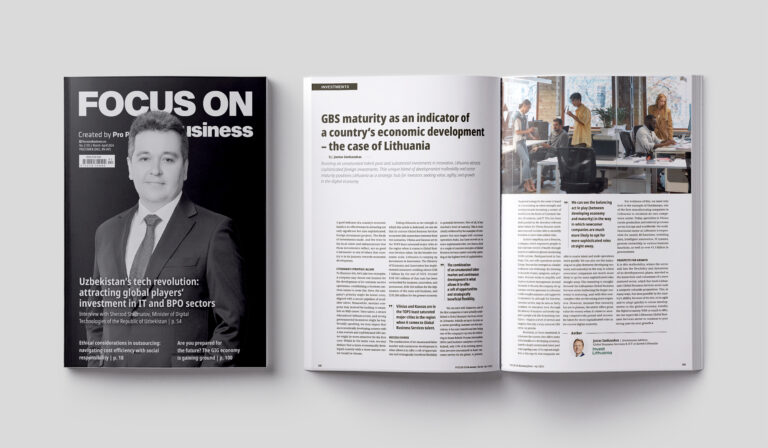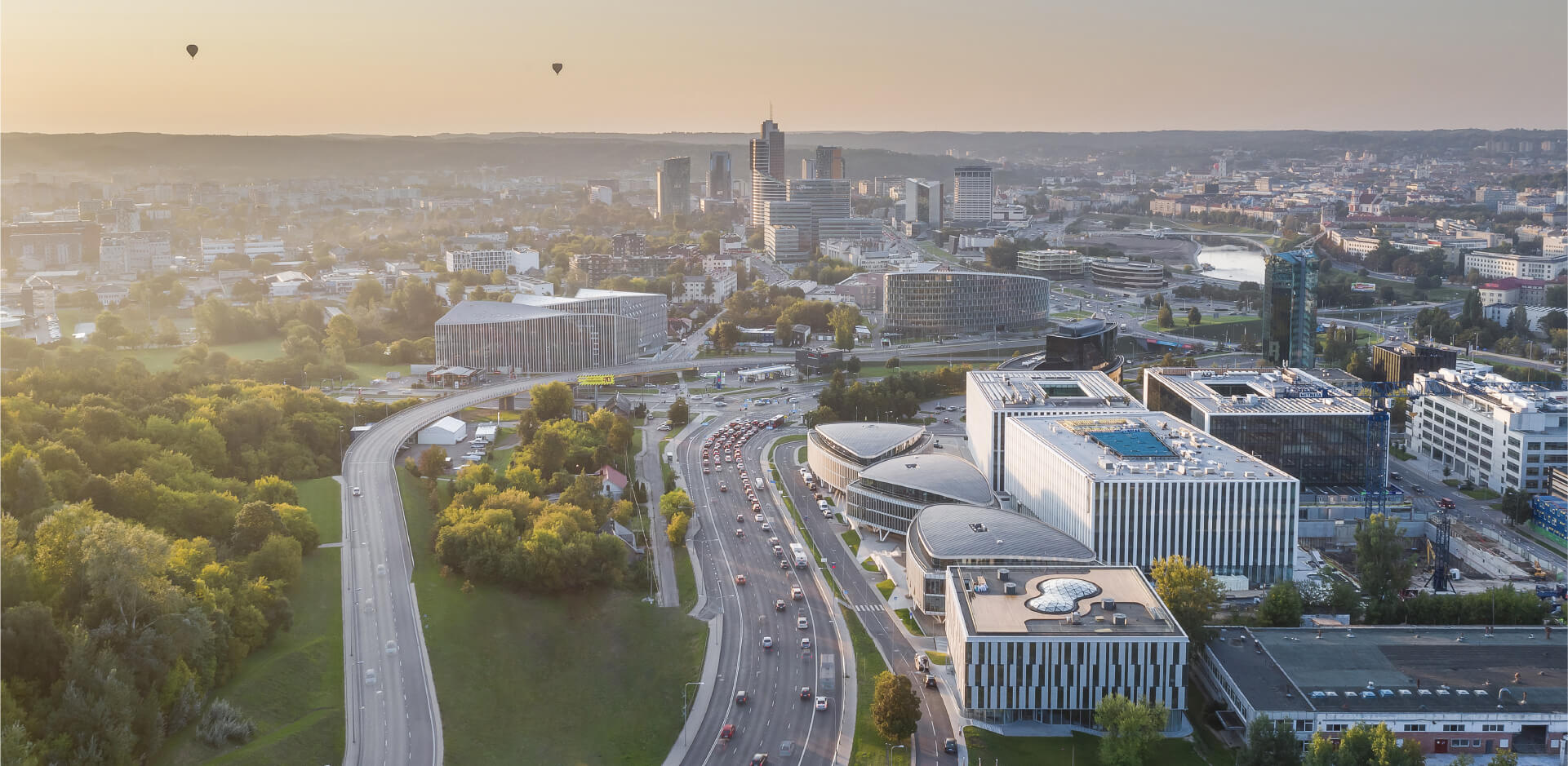Corporate manufacturing strategies will no longer be the same in the post-COVID era. Strict measures to contain the COVID-19 outbreak by governments around the world have created an unprecedented level of uncertainty. This is especially true with regards to consumer behaviour. Furthermore, global supply chains are experiencing strategic shifts. But for every threat manufacturing companies face, there are new opportunities emerging as well. So, despite the flux, manufacturers are actively shaping their manufacturing strategies.
Manufacturers face multiple challenges today – from coping with a dramatic drop in orders and saving their top-line through to managing their bottom-line costs due to lower use of their production lines. Managing cash flow is becoming an issue too as supply chains fracture. Managerial issues are also arising as workers’ morale is affected. Yet, the level of impact varies greatly across industries.
Invest Lithuania ran a survey of foreign capital manufacturers operating in Lithuania just as COVID-19 related restrictions hit across the globe. What we discovered is that sectors like MRO, automotive components, and construction materials manufacturing are facing a significant impact on operations. Temporarily putting entire production facilities on-hold has been a common short-term measure taken. On the other hand, most manufacturers in the defence, medical devices, food & beverage, plastics and packing sectors have experienced little to no impact (output reduced by 10% or less). Yet, in the short term, there are still no safe havens, as all sectors are reporting low to medium-scale negative impacts due to supply chain interferences.
Industry is a strong backbone of the Lithuanian economy – 18% of GDP is generated from manufacturing activity in the country. And it is likely to remain a backbone in the post-COVID economy as well. While Statistics Lithuania’s most recent industrial confidence indicator saw a decrease of 19 percentage points in April vs. March, this is considerably less than the drop of 46 percentage points witnessed in the services sector. Furthermore, the same confidence survey indicated that 18% of manufacturing managers have experienced an increase in demand in the past 3 months. The majority (74%) of respondents do not intend to change employee numbers, although 17% of companies surveyed are considering a decrease.
Politicians like to state that the crisis caused by the COVID-19 disease is the biggest since WWII. Indeed, it is true that the economic impact will be formidable. However, unlike during WWII, not a single manufacturing facility has been physically destroyed. Nevertheless, while capital assets may be safe and sound, the biggest asset for companies in manufacturing operations is still exposed – their people.
The individual situation in terms of personnel greatly depends on the sector. It could well be that the HSE officer already has a central role in orchestrating daily routines on the shop-floor as companies introduce new health & safety procedures to keep operations running. On the other hand, companies may be facing a halt in production due to lack of demand, in which case the challenge is to keep talents informed and engaged.
In the worst cases, entire businesses are at risk of perishing. The current uncertainty presents decision-makers with a difficult choice – they must weigh shareholder returns against stakeholder returns, including those of employees, suppliers, customers, and local communities.
Opting for purely shareholder returns seems like the straightforward option – cutting all variable costs to a minimum, stopping unnecessary payments to suppliers, and laying-off workers. Still, it might be worth thinking twice before cutting off the branch that is growing manufacturers fruit.
The authors of a recent Harvard Business Review article have argued that COVID-19, and it’s broader implications to businesses, do not necessarily need to lead to lay-offs. On the contrary, taking a broader perspective, leading with compassion, and considering overall stakeholder returns will most probably generate better long-term returns, argue the authors.
Suppliers are also major stakeholders that need careful management. After all, they keep a manufacturer’s operations running. Interrupted deliveries and liquidity issues are causing problems across most manufacturing supply chains. The decisions companies make today regarding their supply base will send a clear message, and directly impact how those suppliers in turn treat them in the post-COVID era. A good example here is one global FMCG company which decided to set-up a EUR 300 million fund to support its suppliers and smaller customers, including offering credit and extending payment terms. And all of this was financed from its own cash-flow.
Corporates running multiple manufacturing sites globally face an even bigger conundrum, namely, how to balance operation capacities, risk, and throughput across locations. Organizations are facing a broad range of supply chain and wider third party concerns, report PwC. These challenges might result in a flow of manufacturing in-sourcing closer to major hubs of operation, especially for sectors considered to be of strategic importance by governments.
From the perspective of investment promotion agencies, my personal take is that countries will compete on talent quality more than ever before. In this respect, Lithuania is well positioned and ready to re-shore manufacturing back to the European Union.
We are living through days of unprecedented uncertainty. It is difficult to predict how consumers will behave in the post-COVID era. For example, 27% of respondents to a UBS Evidence Lab Consumer Pulse Survey conducted over 1st-6th of April in China expressed an increased desire to purchase a car. Yet, if there is a significant drop in income levels, these consumers might have to postpone their car purchasing decisions. Thus, one potential scenario might see consumers shifting their preferences due to technological advancements. Instead of purchasing a conventional car this year, they might focus on purchasing an electric vehicle in a year or two from now.
Given the flux, there is no single recipe as to how companies should adapt their specific manufacturing strategies. It appears that business resilience alone might not be sufficient to alleviate the economic burdens of the COVID-19 crisis. Recently, 23 CEOs and Presidents of large multinationals addressed European leaders calling for solidarity across the European continent and asking them to make the single market the central instrument of recovery from the crisis.
Solidarity is necessary, both at a macro and a micro level. To date, Lithuanian businesses have to a great extent shown solidarity with local communities. Over the last nine weeks since the outbreak of COVID-19, registered unemployment has increased only slightly, from 9.4% to 11.5%, reports the Employment Services Under the Ministry of Social Security and Labour (article available in Lithuanian only). Despite this, we already see many families being affected, and employees in the manufacturing sector are no exception to this.
At Invest Lithuania, we understand that businesses have taken a major share of the economic impact of the COVID-19 crisis. That is why we have compiled a pool of useful information for businesses operating in Lithuania. It addresses COVID-19 issues related to migration, state support, idle time management, subsidies for wages paid during idle time, and tax payment changes. I hope manufacturers find it a useful resource to support their decision-making process at this time.
As Protagoras, an ancient Greek philosopher, put it in a treatise simply entitled Truth: “[when] all things are in flux, so that sensation is subjective, it follows that man is the measure of all things.” So, to loosely paraphrase Protagoras, do not give in to the temptation of believing that short-term interests are the measure of all things.
Want to dicuscc this further? Do not hesitate to contact us!















